Abstract
1. The cyclic analogue of dopamine, 2-amino-6,7-dihydroxy-1,2,3,4-tetrahydronaphthalene (ADTN) was injected into the lateral ventricle or bilaterally into the nucleus accumbens or caudate nucleus of conscious rats and its effect on locomotor activity was investigated. 2. When given intraventricularly, ADTN produced some stereotyped responses which were followed by a strong and long lasting stimulation of locomotor activity. When administered bilaterally into the nucleus accumbens a similar stimulation of locomotor activity was observed. ADTN had no effect on locomotor activity when injected bilaterally into the caudate nucleus. 3. The ADTN-induced locomotor stimulation following its intraventricular injection was completely abolished by a low dose of pimozide (0.01 mg/kg, i.p.) or haloperidol (0.5 mg/kg, i.p.). Pimozide (1 mg/kg, i.p.) given 30 min before ADTN injected bilaterally into the nucleus accumbens completely blocked locomotor stimulation. 4. Unilateral injections of ADTN (5 mug) into the nucleus accumbens caused locomotor stimulation but no turning. 5. Bilateral injections into the nucleus accumbens of 2-amino-6,7-dimethoxy-1,2,3,4-tetrahydronaphthalene or 0.9 percent w/v NaCl solution had no effect on locomotor activity. 6. It is concluded that the central stimulant action of ADTN is due to an effect on the dopamine receptors in the nucleus accumbens.
Full text
PDF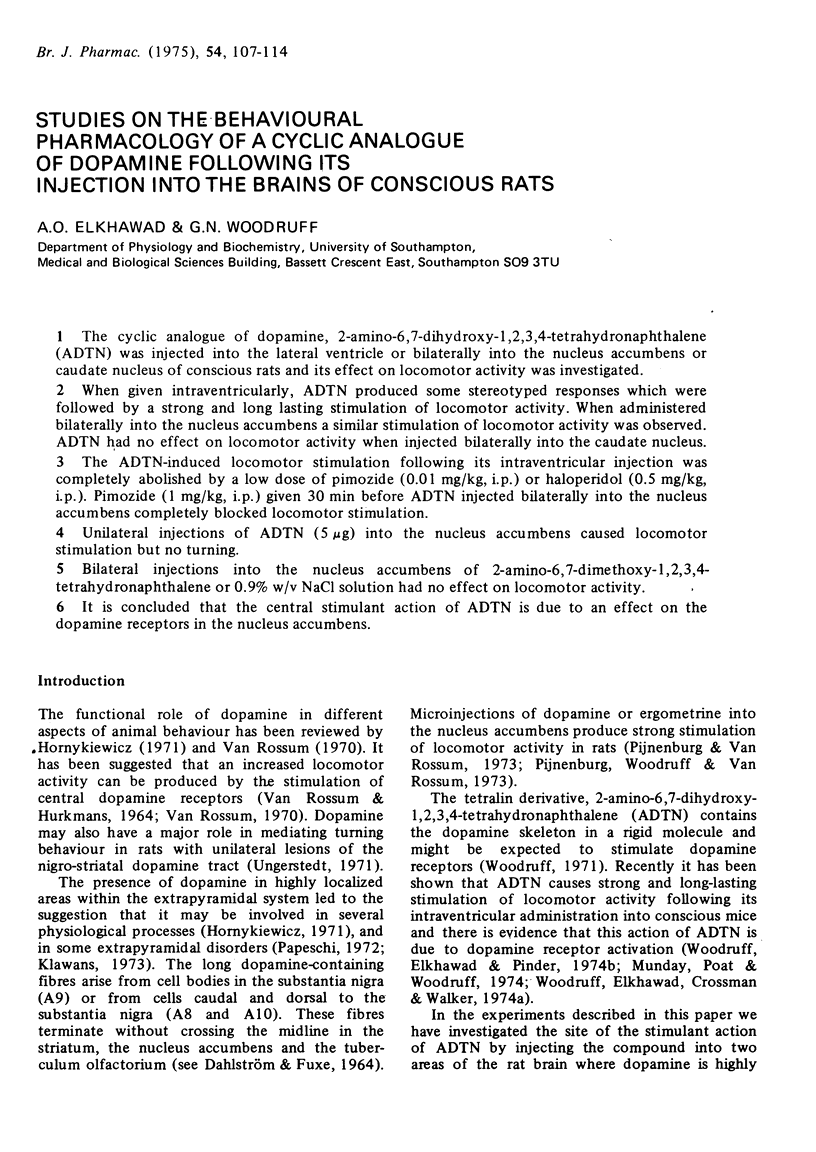
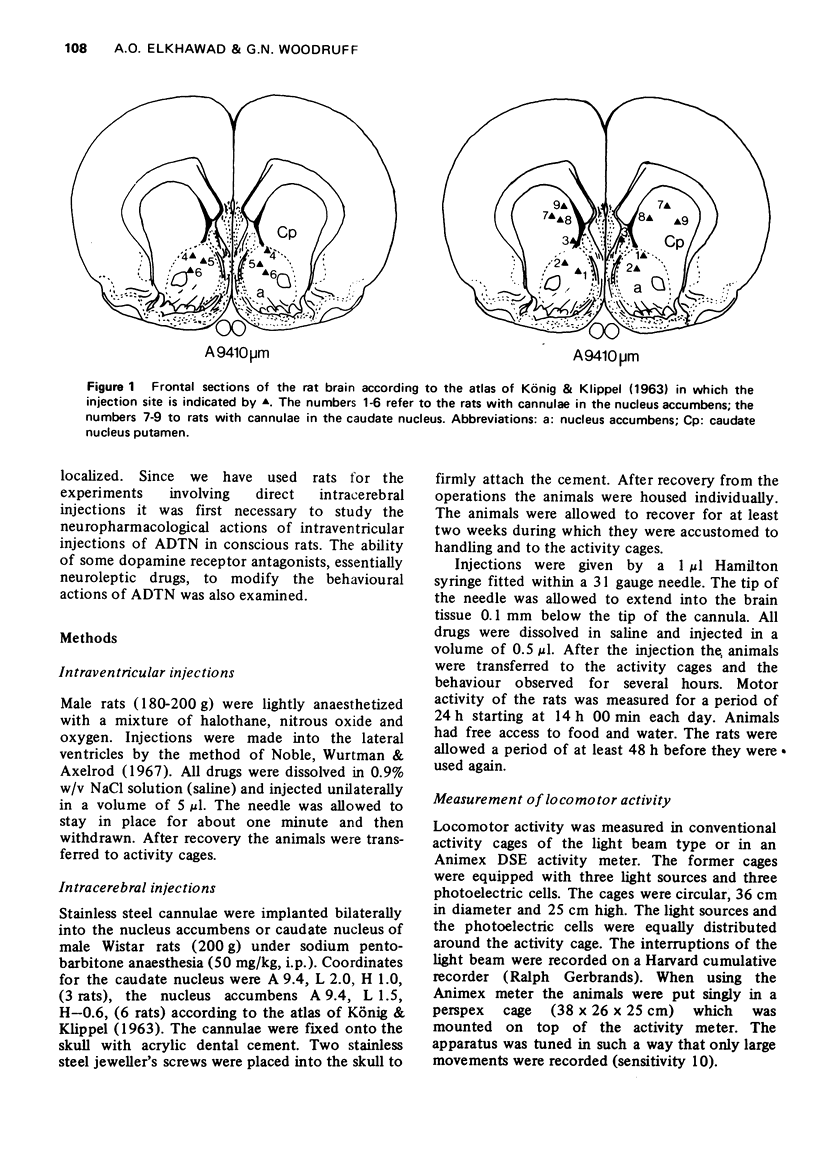
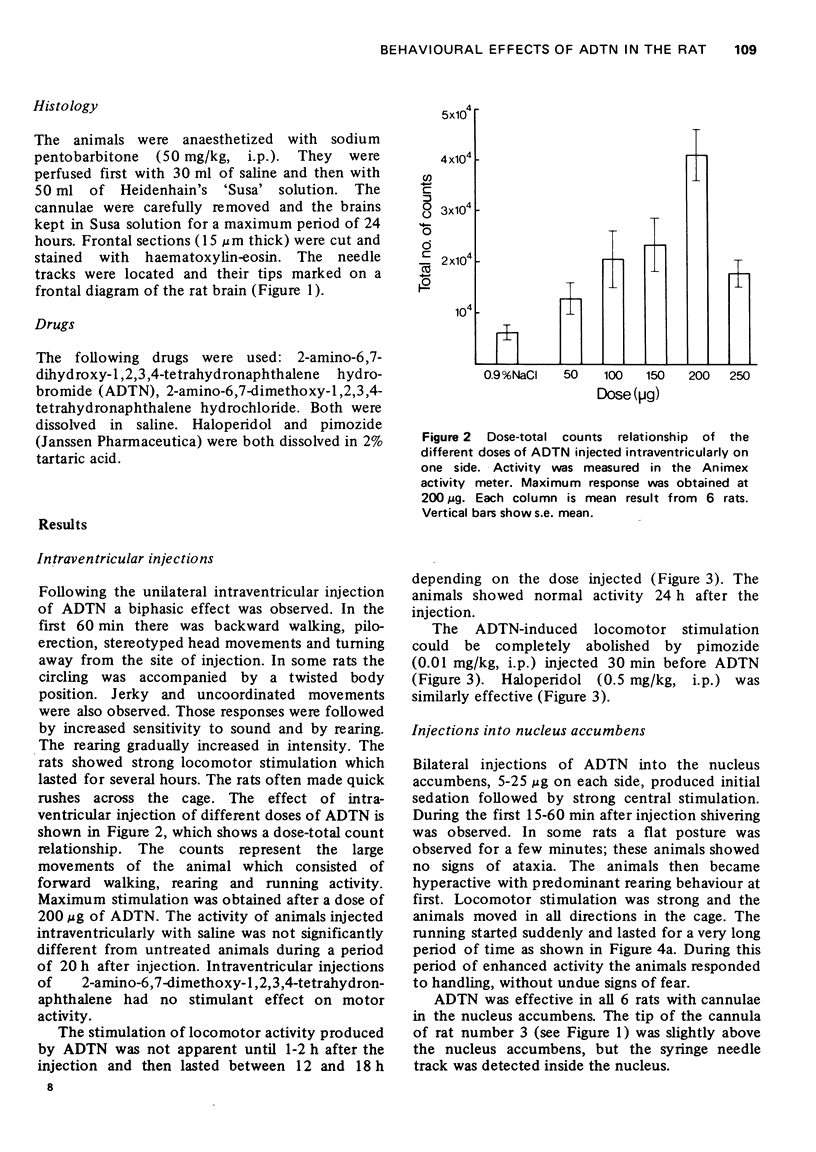
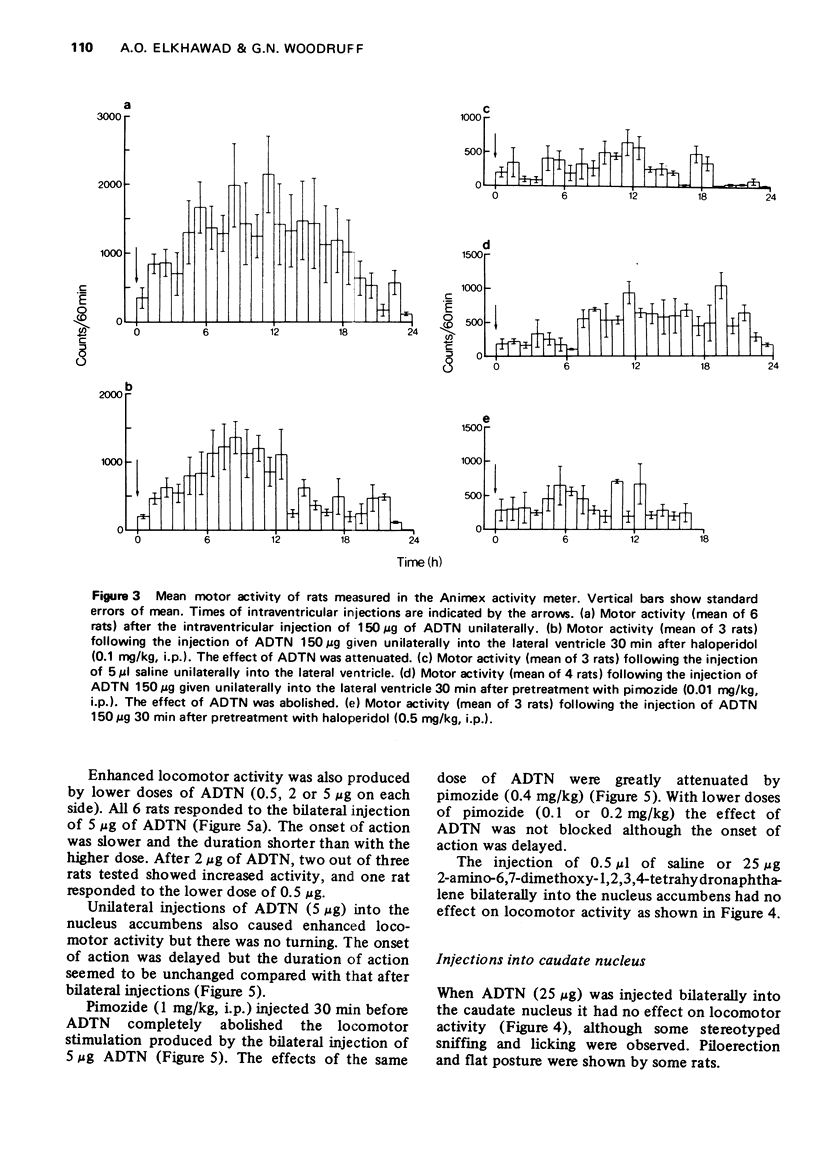
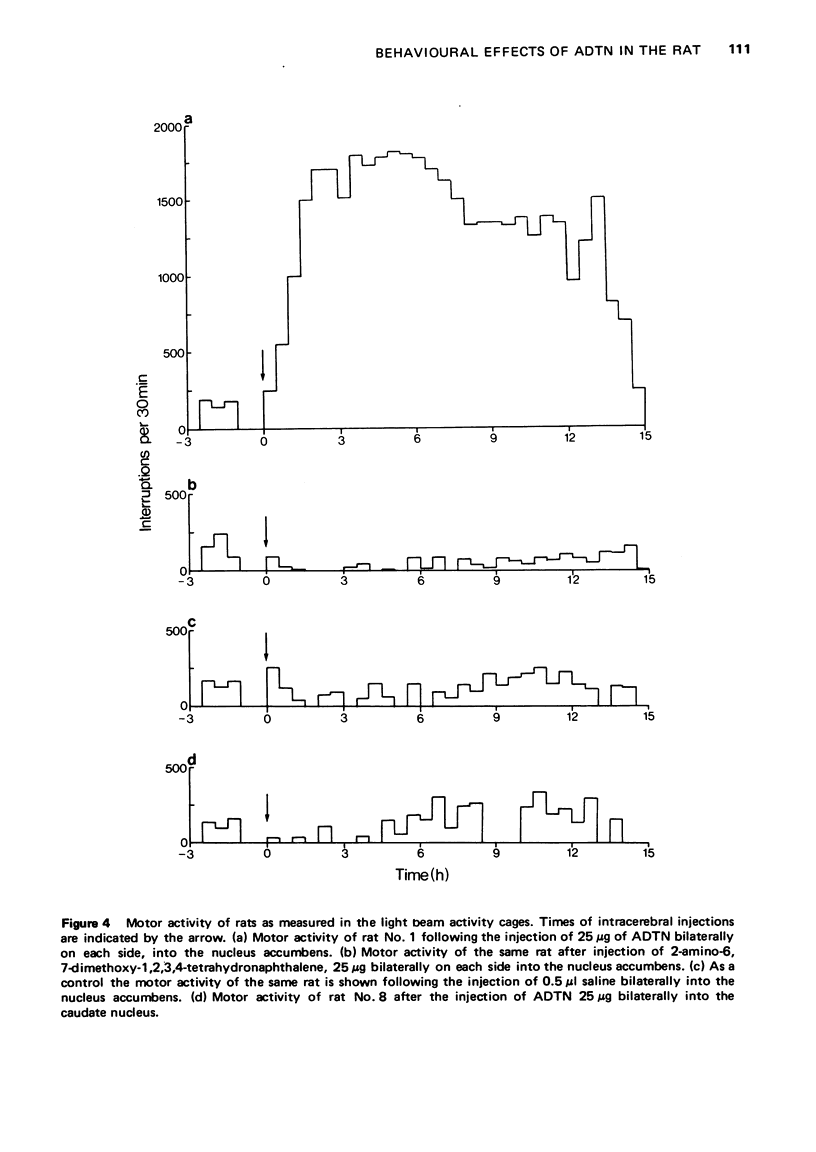
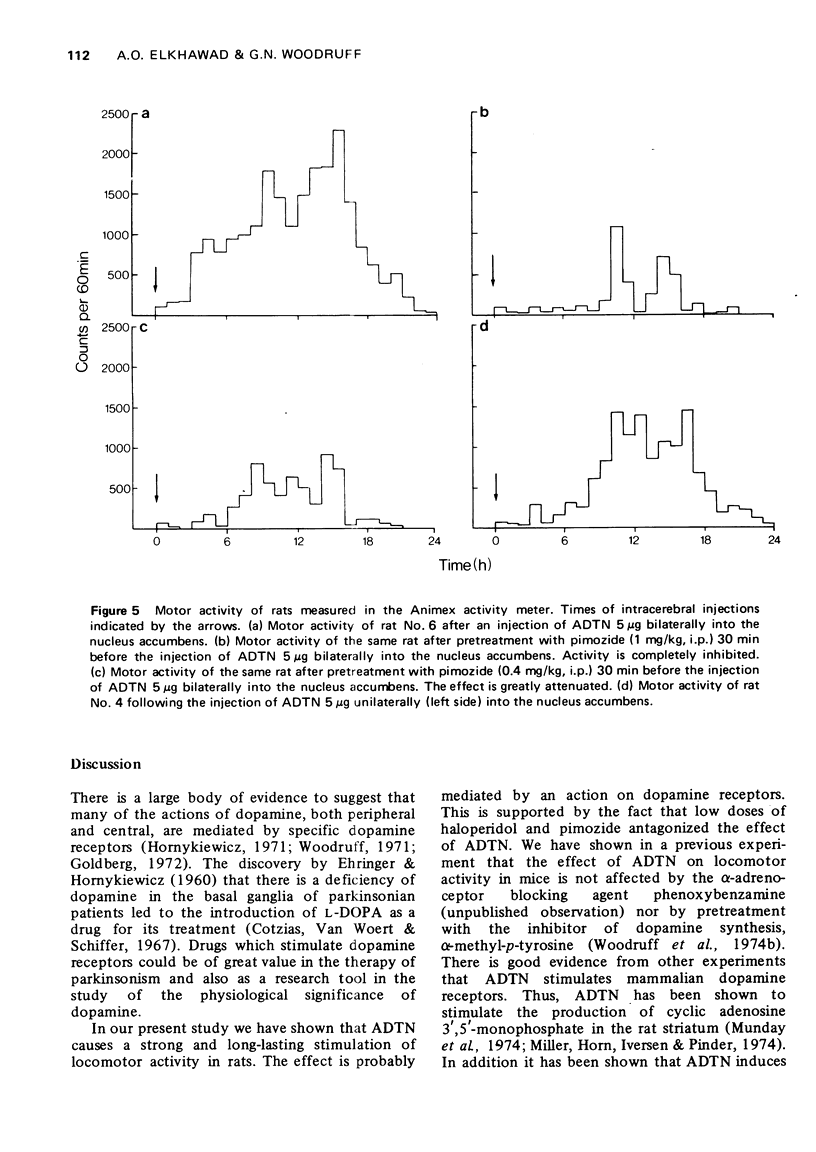
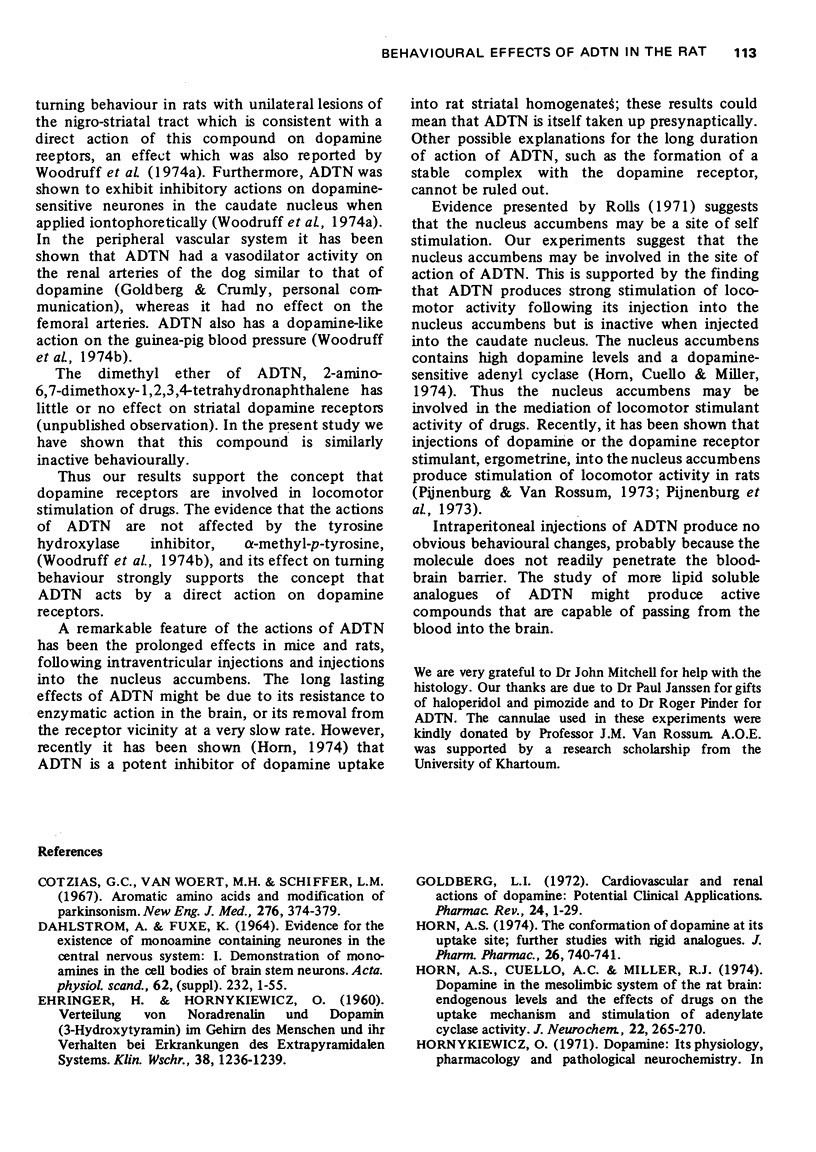
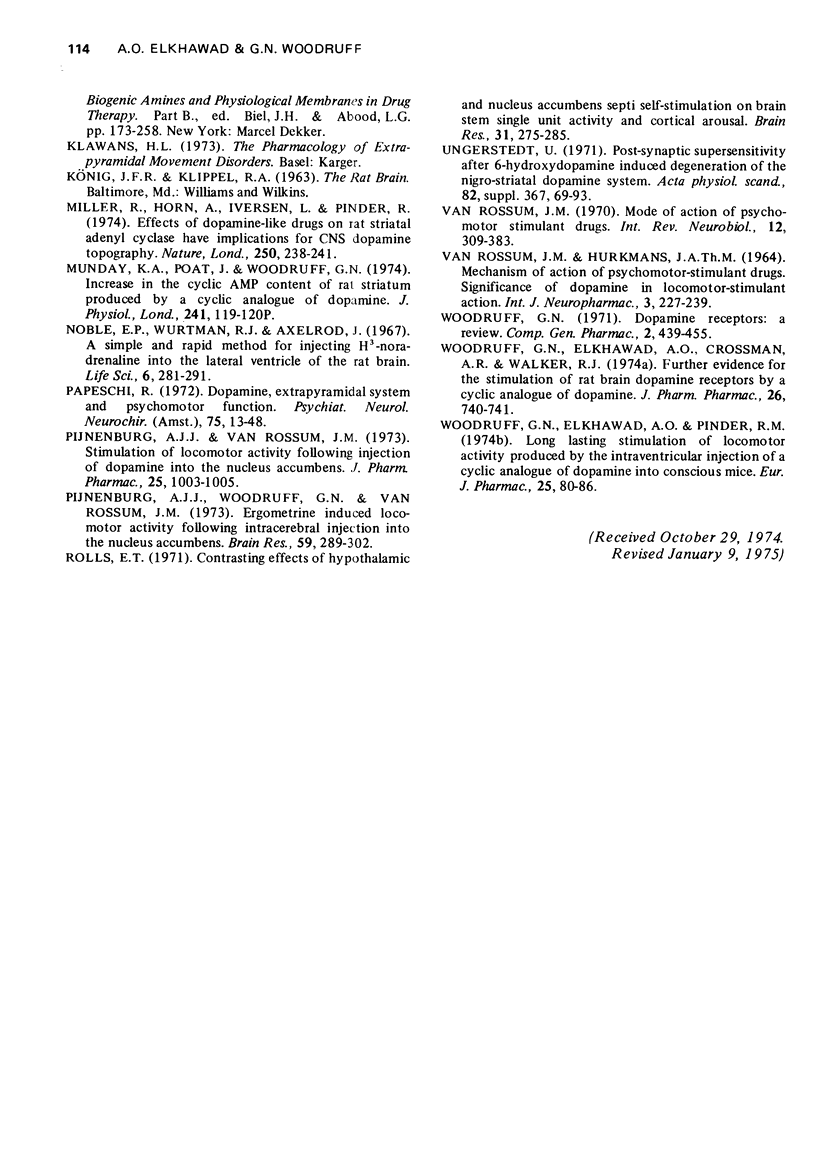
Selected References
These references are in PubMed. This may not be the complete list of references from this article.
- Cotzias G. C., Van Woert M. H., Schiffer L. M. Aromatic amino acids and modification of parkinsonism. N Engl J Med. 1967 Feb 16;276(7):374–379. doi: 10.1056/NEJM196702162760703. [DOI] [PubMed] [Google Scholar]
- EHRINGER H., HORNYKIEWICZ O. [Distribution of noradrenaline and dopamine (3-hydroxytyramine) in the human brain and their behavior in diseases of the extrapyramidal system]. Klin Wochenschr. 1960 Dec 15;38:1236–1239. doi: 10.1007/BF01485901. [DOI] [PubMed] [Google Scholar]
- Goldberg L. I. Cardiovascular and renal actions of dopamine: potential clinical applications. Pharmacol Rev. 1972 Mar;24(1):1–29. [PubMed] [Google Scholar]
- Horn A. S., Cuello A. C., Miller R. J. Dopamine in the mesolimbic system of the rat brain: endogenous levels and the effects of drugs on the uptake mechanism and stimulation of adenylate cyclase activity. J Neurochem. 1974 Feb;22(2):265–270. doi: 10.1111/j.1471-4159.1974.tb11589.x. [DOI] [PubMed] [Google Scholar]
- Munday K. A., Poat J. A., Woodruff G. N. Proceedings: Increase in the cyclic AMP content of rat striatum produced by a cyclic analogue of dopamine. J Physiol. 1974 Sep;241(2):119P–120P. [PubMed] [Google Scholar]
- Noble E. P., Wurtman R. J., Axelrod J. A simple and rapid method for injecting H3-norepinephrine into the lateral ventricle of the rat brain. Life Sci. 1967 Feb 1;6(3):281–291. doi: 10.1016/0024-3205(67)90157-9. [DOI] [PubMed] [Google Scholar]
- Papeschi R. Dopamine, extrapyramidal system, and psychomotor function. Psychiatr Neurol Neurochir. 1972 Jan-Feb;75(1):13–48. [PubMed] [Google Scholar]
- Pijnenburg A. J., Woodruff G. N., van Rossum J. M. Ergometrine induced locomotor activity following intracerebral injection into the nucleus accumbens. Brain Res. 1973 Sep 14;59:289–302. doi: 10.1016/0006-8993(73)90267-9. [DOI] [PubMed] [Google Scholar]
- Pijnenburg A. J., van Rossum J. M. Letter: Stimulation of locomotor activity following injection of dopamine into the nucleus accumbens. J Pharm Pharmacol. 1973 Dec;25(12):1003–1005. doi: 10.1111/j.2042-7158.1973.tb09995.x. [DOI] [PubMed] [Google Scholar]
- Rolls E. T. Contrasting effects of hypothalamic and nucleus accumbens septi self-stimulation on brain stem single unit activity and cortical arousal. Brain Res. 1971 Aug 20;31(2):275–285. doi: 10.1016/0006-8993(71)90182-x. [DOI] [PubMed] [Google Scholar]
- Ungerstedt U. Postsynaptic supersensitivity after 6-hydroxy-dopamine induced degeneration of the nigro-striatal dopamine system. Acta Physiol Scand Suppl. 1971;367:69–93. doi: 10.1111/j.1365-201x.1971.tb11000.x. [DOI] [PubMed] [Google Scholar]
- VAN ROSSUMJ, HURKMANS A. T. MECHANISM OF ACTION OF PSYCHOMOTOR STIMULANT DRUGS. SIGNIFICANCE OF DOPAMINE IN LOCOMOTOR STIMULANT ACTION. Int J Neuropharmacol. 1964 May;3:227–239. doi: 10.1016/0028-3908(64)90012-7. [DOI] [PubMed] [Google Scholar]
- Van Rossum J. M. Mode of action of psychomotor stimulant drugs. Int Rev Neurobiol. 1970;12:307–383. doi: 10.1016/s0074-7742(08)60065-3. [DOI] [PubMed] [Google Scholar]
- Woodruff G. N. Dopamine receptors: a review. Comp Gen Pharmacol. 1971 Dec;2(8):439–455. doi: 10.1016/0010-4035(71)90041-3. [DOI] [PubMed] [Google Scholar]
- Woodruff G. N., Elkhawad A. O., Crossman A. R., Walker R. J. Further evidence for the stimulation of rat brain dopamine receptors by a cyclic analogue of dopamine. J Pharm Pharmacol. 1974 Sep;26(9):740–741. doi: 10.1111/j.2042-7158.1974.tb09363.x. [DOI] [PubMed] [Google Scholar]
- Woodruff G. N., Elkhawad A. O., Crossman A. R., Walker R. J. Further evidence for the stimulation of rat brain dopamine receptors by a cyclic analogue of dopamine. J Pharm Pharmacol. 1974 Sep;26(9):740–741. doi: 10.1111/j.2042-7158.1974.tb09363.x. [DOI] [PubMed] [Google Scholar]


